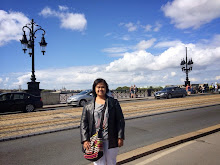By Andy Eaton
You’re almost set. The content of your website, e-book, or software is complete. Ready to put together your e-book or software on the market. In order to turn your prospect into buyer, the look of your e-cover is just as important as the content. What to do? If you’re adventurous and seeking the how-to's of self-design below is a short list of graphic design terms you’ll need to know. If you’re considering having your e-cover professionally designed (smart move) the terms below will help you talk intelligently about your project.
Aliasing
Aliasing happens when a computer monitor printer, or graphics file does not have a high enough resolution to represent a graphic image or text. An aliased image has the “jaggies.”
Anti-Aliasing
Anti-Aliasing is smoothing or blending the transition of pixels in an image thus making the edges appear smooth, not jagged.
Banner
A banner is a graphic image placed on a web site as an advertisement. Banners are commonly used for brand awareness and generating sales.
Bevel
A beveled effect to a graphic gives the image a raised appearance by applying highlight colors and shadow colors to the inside and outside edges of the graphic.
Bitmap Image (bmp)
A graphic defined by specifying the colors of dots or pixels that make up the picture. Common types of bitmap graphics are GIF and JPEG
Cast Shadow
A cast shadow creates added emphasis on perspective. Cast shadows can be stretched, rotated, and skewed to create a realistic 3-D effect
CMYK
CMYK stands for the colors Cyan-Magenta-Yellow-Black. In print design colors are defined as a percentage of each of these 4 colors. For example, the color black would be 0-0-0-100. Display devices usually define colors using RGB.
Color Cast
Using a color cast will change the hue of a selected part of an image, while keeping the saturation and brightness intact. Looking at an image with a color is like looking at it through colored glasses.
Dithering
Dithering is combining pixels from a 256-color palette into patterns that approximate other colors. At a distance the eye merges the pixels into a single color. To display a full-color graphic on a 256-color monitor, computers must simulate the colors it cannot display.
DPI
DPI stands for dots per inch. DPI specifies the resolution of an output device, such as a printer.
Drop Shadow
A drop shadow gives an image depth by creating shading offset behind the image.
Duotone
The application of two colors to provide richer tones than a single-color image.
Emboss
Embossing a graphic image adds dimension by making the image appear as if it were carved as a projection from a flat background.
Feathering
Feathering the edge of a graphic gradually diffuses the edge, making the edge look blurry.
Font
A font is a complete set of characters in a specific size and style of type. Some examples are Times New Roman, Arial, and Century.
GIF
GIF stand for graphic Interchange Format. GIF images are the most widely used graphic format on the web. GIF images displays up to 256 colors.
Glow
A glow creates a surrounding highlight of an image. A high radiance creates a soft, subtle, glow and a low radiance creates a hard, bright glow. An example of a bright glow is neon.
Gradient
A gradual transition of colors.
Graphic Backgrounds
The bottom layer on a web page, usually with either a design or color that highlights the copy above.
Grayscale
An application of the color black that simulates a range of tones. Grayscale images have no hue.
Hexadecimal
A numbering system using a base of 16. The first 10 digits are 0-9. The next 6 are A-F. Hexadecimal numbers are used to define colors on the web. For example the color white is hexadecimal #FFFFFF.
Hue
Hue is the actual color of an object. It is measured as a location on a color wheel, expressed in degrees.
JPEG
JPEG is the abbreviation for Joint Photographic Experts Group. JPEG images allow for more colors than GIF images and are usually smaller in size.
Kerning
Kerning is the horizontal spacing between the letters in a word.
Leading
The vertical spacing between lines of text.
Andy Eaton has created a 10 day ecourse, which includes informative articles, training videos, special offer discounts, plus lots more - finally learn to create your own amazing ecover graphics. simply send a blank email to arpgraphicslist@graphicsecretsexposed.com or visit http://www.graphicsecretsexposed.com
Article Source: http://EzineArticles.com/
